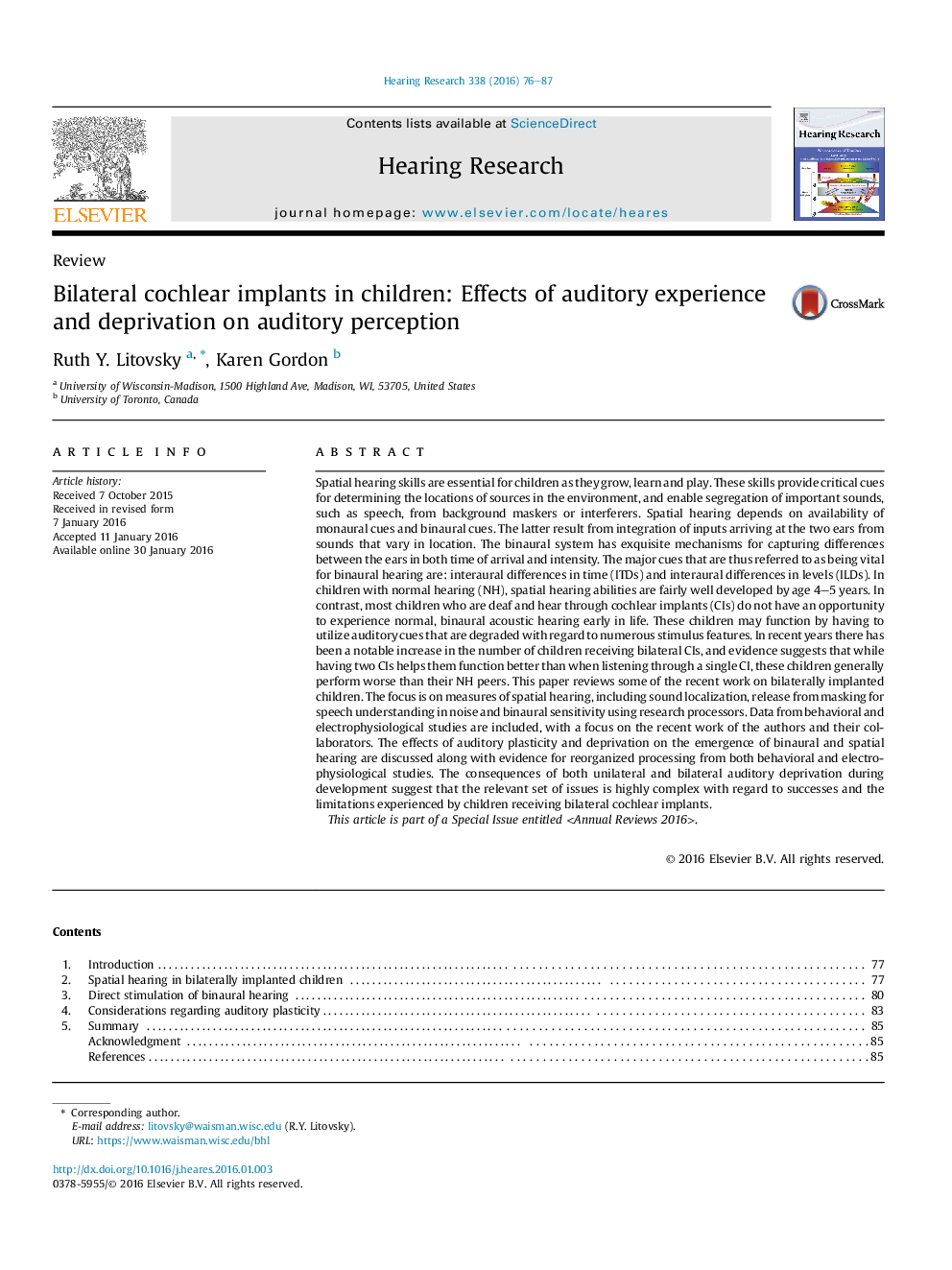| Article ID | Journal | Published Year | Pages | File Type |
|---|---|---|---|---|
| 4355065 | Hearing Research | 2016 | 12 Pages |
•Spatial hearing relies on integration of inputs arriving at the two ears from sound sources that vary in location in space.•Binaural integration relies on capturing differences between the ears in time of arrival and intensity (ITDs and ILDs).•Children who are deaf and hear through CIs show degraded binaural abilities by comparison with normal hearing children.•Auditory plasticity and deprivation affect emergence of binaural and spatial hearing through reorganized processing.
Spatial hearing skills are essential for children as they grow, learn and play. These skills provide critical cues for determining the locations of sources in the environment, and enable segregation of important sounds, such as speech, from background maskers or interferers. Spatial hearing depends on availability of monaural cues and binaural cues. The latter result from integration of inputs arriving at the two ears from sounds that vary in location. The binaural system has exquisite mechanisms for capturing differences between the ears in both time of arrival and intensity. The major cues that are thus referred to as being vital for binaural hearing are: interaural differences in time (ITDs) and interaural differences in levels (ILDs). In children with normal hearing (NH), spatial hearing abilities are fairly well developed by age 4–5 years. In contrast, most children who are deaf and hear through cochlear implants (CIs) do not have an opportunity to experience normal, binaural acoustic hearing early in life. These children may function by having to utilize auditory cues that are degraded with regard to numerous stimulus features. In recent years there has been a notable increase in the number of children receiving bilateral CIs, and evidence suggests that while having two CIs helps them function better than when listening through a single CI, these children generally perform worse than their NH peers. This paper reviews some of the recent work on bilaterally implanted children. The focus is on measures of spatial hearing, including sound localization, release from masking for speech understanding in noise and binaural sensitivity using research processors. Data from behavioral and electrophysiological studies are included, with a focus on the recent work of the authors and their collaborators. The effects of auditory plasticity and deprivation on the emergence of binaural and spatial hearing are discussed along with evidence for reorganized processing from both behavioral and electrophysiological studies. The consequences of both unilateral and bilateral auditory deprivation during development suggest that the relevant set of issues is highly complex with regard to successes and the limitations experienced by children receiving bilateral cochlear implants.This article is part of a Special Issue entitled
